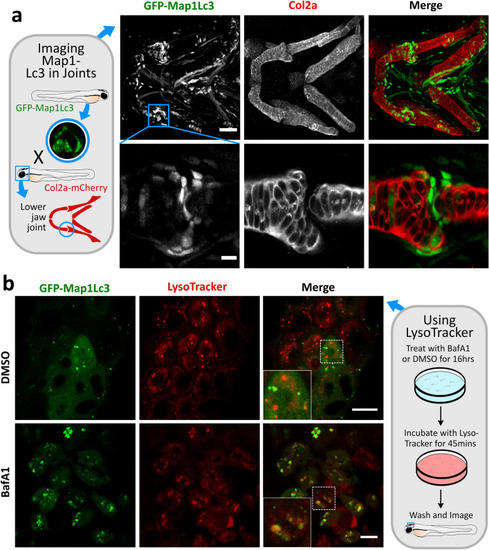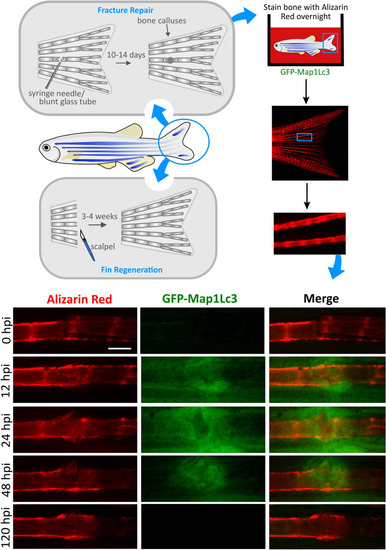- Title
-
Zebrafish as a model to study autophagy and its role in skeletal development and disease
- Authors
- Moss, J.J., Hammond, C.L., Lane, J.D.
- Source
- Full text @ Histochem. Cell Biol.
|
Overview of the roles autophagy plays in bone and cartilage cells, autophagy helps maintain the homeostasis, survival and function of osteoblasts, osteoclasts, osteocytes and chondrocytes |
|
Examples of how GFP-Map1Lc3 transgenic zebrafish line can be used to study autophagy in a skeletal context, |
|
Using GFP-Map1Lc3 transgenic zebrafish line to study the role of autophagy in fin fracture repair and bone regeneration – |
|
Overview of the core proteins involved in the autophagy pathway and its regulation in zebrafish, knockout (KO) zebrafish lines highlighted in red, and boxes show commonly used drugs which can activate (green) or inhibit (red) autophagy activity. |




